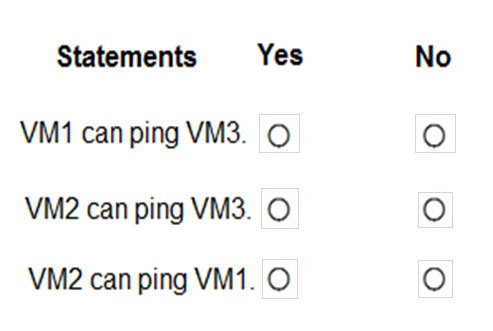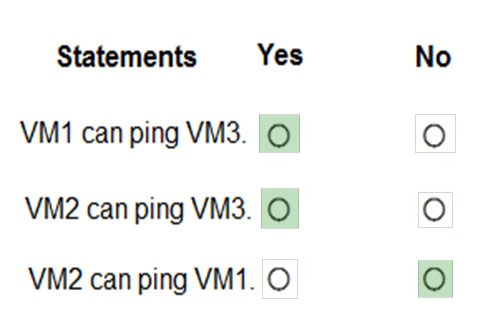

HOTSPOT -
You have an Azure subscription named Subscription1. Subscription1 contains the virtual networks in the following table.
Subscription1 contains the virtual machines in the following table.
The firewalls on all the virtual machines are configured to allow all ICMP traffic.
You add the peerings in the following table.
For each of the following statements, select Yes if the statement is true. Otherwise, select No.
NOTE: Each correct selection is worth one point.
Hot Area:

Derek_O2018
Highly Voted 5 years, 3 months agoExam103
5 years, 3 months agoSTFN2019
5 years, 2 months agoSheru
5 years, 1 month agosnoocer
5 years, 3 months agoaimar047
Highly Voted 5 years, 2 months agotashakori
Most Recent 1 year, 3 months agoRanjit131313
2 years, 3 months agoLkk51
4 years agoNeonlight8
4 years, 4 months agoOzguraydin
4 years, 5 months agoNickyDee
4 years, 5 months agotezawynn
4 years, 7 months agoLeonSKanady
4 years, 8 months agodarfinx
4 years, 8 months agoshac1018
4 years, 10 months agoimnotabot
4 years, 10 months agoLoma
4 years, 10 months agoGbala
4 years, 10 months agodisplaynamehere
4 years, 11 months agoBurgtaro
4 years, 11 months agoPremsinghcmr
4 years, 11 months ago